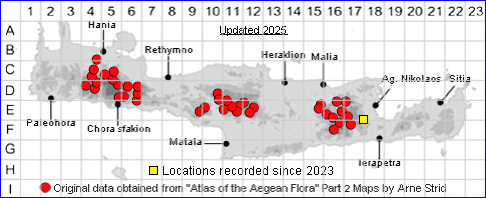
CERASTIUM BRACHYPETALUM subsp. ROESERI
Family and Genus:- See- CARYOPHYLLACEAE
Common Name:- Grey mouse-ear
Homotypic Synonyms:- Cerastium roeseri.
Meaning:- Cerastium (Gr) Horned, (the fruiting capsule's shape).
Brachypetalum (Gr) With sort petals.
Roeseri (L) Possibly for Paul Roeser, Botanist
General description:- Annual, densely hairy. with erect branches.
Stem:-
1) up to 40 cm, with long, deflexed, patent or ascending eglandular hairs, with or
without glandular hairs.
Leaves:-
1) Up to 20 mm.
a) lower, spatulate or obovate.
b) upper, ovate, elliptical or oblong, obtuse to acute, pubescent.
Flowers:-
1) Inflorescence, more or less lax.
a) pedicels, 3-27 mm. bent just below the flower, with patent or ascending-
appressed eglandular hairs.
2) Bracts, herbaceous.
3) Sepals, 3-6·5 mm, lanceolate to oblong-lanceolate, obtuse to acute, margin, thin
scarious, with eglandular hairs exceeding the apex.
4) Petals, shorter than or longer than the sepals, bifid for up to 1/3 their length, with
a small auricle at the base.
5) Stamens, up to 10.
6) Styles, 5.
Fruit:-
1) Capsule, 6-9 mm, cylindrical or oblong, often more or less curved.
2) Seeds, 0·4-1 mm, numerous, spherical or reniform, minutely tuberculate.
Key features:-
1) Sepals 3-6·5 mm.
Habitat:- Rocky and gravelly slopes with open shrubby vegetation, orchards and
open coniferous woodland.
Distribution:- Fairly widespread across the Mediterranean but not common. On
Crete confined to the three main massifs, not common.
Flowering time:- Apr-June.
Photos by:- Steve Lenton
SPECIES DESCRIPTION
